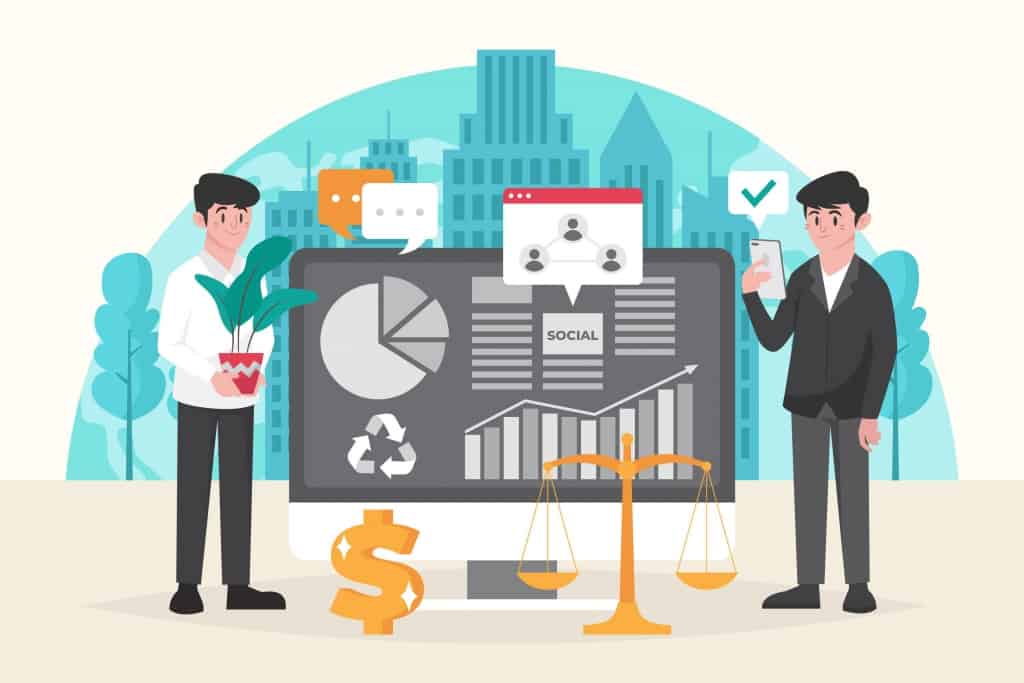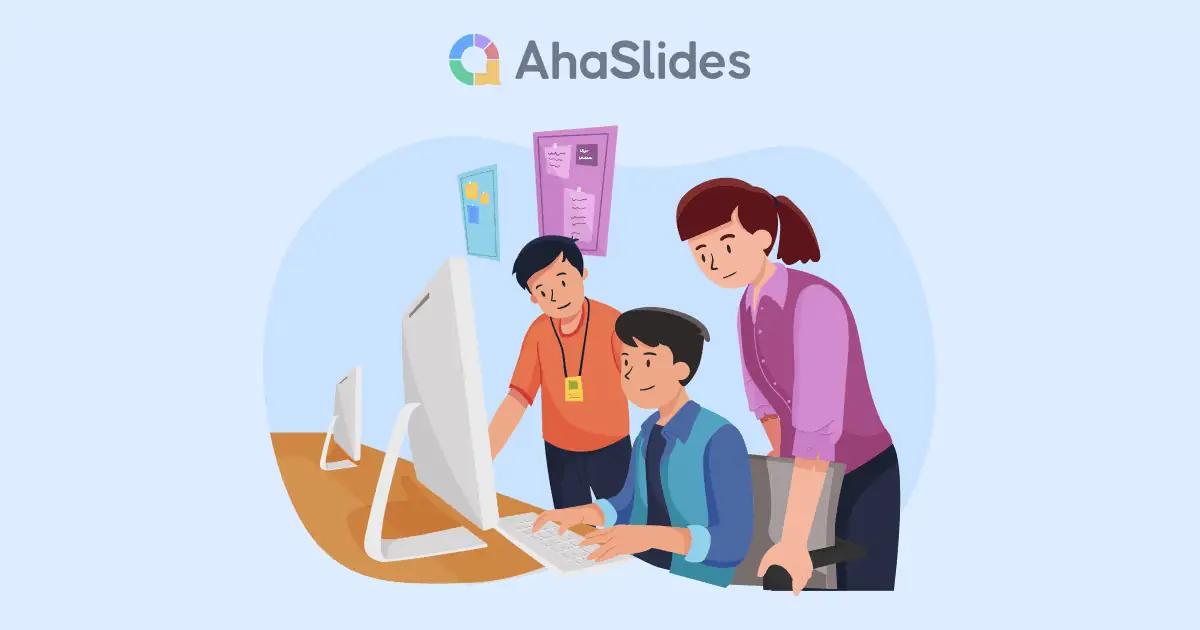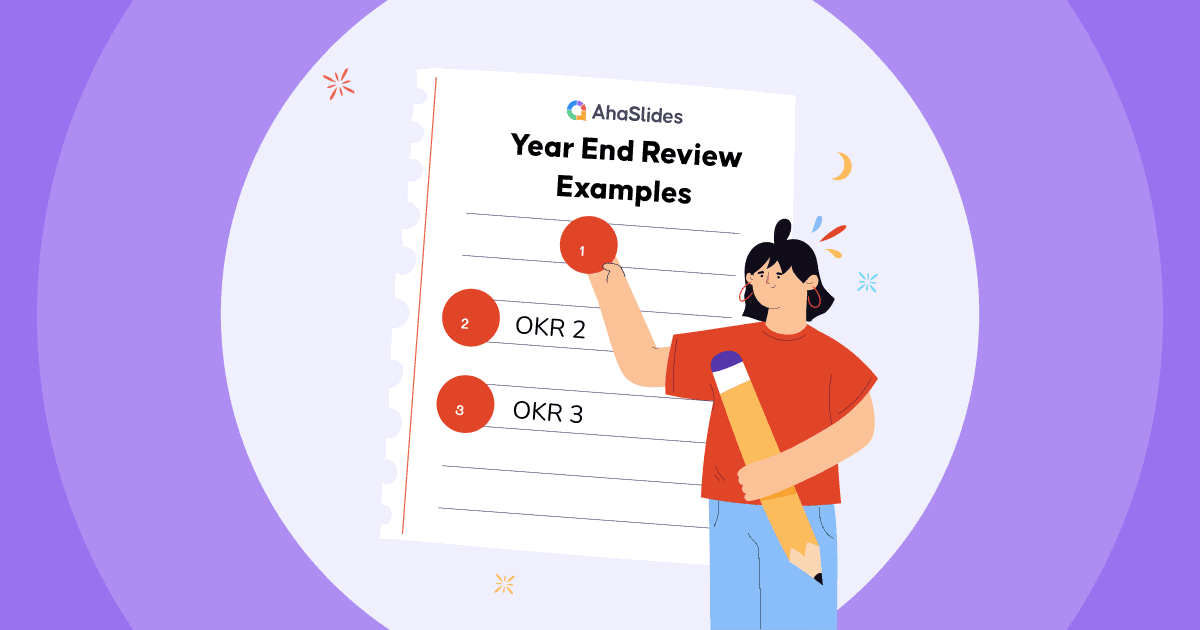Har du nogensinde været i en situation, hvor du skulle prutte om prisen på en bil, forhandle en lønforhøjelse eller endda prutte med en gadesælger om en souvenir? Hvis ja, har du deltaget i fordelingsforhandlinger, en grundlæggende forhandlingsstrategi, der fokuserer på at opdele en fast ressource.
I dette blogindlæg vil vi udforske, hvad distributiv forhandling er, dens hverdagseksempler, og hvordan den adskiller sig fra integrativ forhandling. Vi vil også dykke ned i de vigtigste strategier og taktikker, der kan hjælpe dig med at blive en mere effektiv forhandler i distributive scenarier.
Indholdsfortegnelse
- Hvad er fordelingsforhandlinger?
- Distributive forhandlinger vs. Integrative forhandlinger
- Eksempler på distributionsforhandling
- Strategi og taktik til fordelingsforhandlinger
- Nøgleforsøg
- Ofte Stillede Spørgsmål

Tips til bedre engagement

Leder du efter mere sjov under sammenkomster?
Saml dine teammedlemmer ved en sjov quiz på AhaSlides. Tilmeld dig for at tage gratis quiz fra AhaSlides skabelonbibliotek!
🚀 Snup gratis quiz☁️
Hvad er fordelingsforhandlinger?
Fordelingsforhandlinger er en forhandlingsstrategi, hvor to eller flere parter sigter mod at dele en fast eller begrænset ressource mellem sig. Tænk på det som et scenarie, hvor du skal dele en pizza i skiver, og alle vil have et større stykke. I distributionsforhandlinger er ideen at maksimere din andel af kagen, mens du prøver at få den bedst mulige aftale for dig selv.
Kort sagt er det som en tovtrækning om, hvem der får hvad. Denne type forhandling involverer ofte konkurrerende interesser, hvor den ene part kan tabe, hvad den anden part vinder. Det er en win-loss-situation, hvor jo mere den ene side vinder, jo mindre er der til den anden.
Distributive forhandlinger vs. Integrative forhandlinger
Fordelingsforhandling handler om at kræve din andel, som at prutte om en pris på et marked eller at forhandle en lønstigning med din arbejdsgiver. Jo mere du får, jo mindre modtager den anden part.
Integrative forhandlinger, på den anden side er det mere som at udvide markedet. Forestil dig, at du og din ven har én pizza, men du har også nogle ekstra toppings som pepperoni, svampe og ost. I stedet for at kæmpe om den eksisterende pizza, arbejder I sammen om at skabe en bedre ved at tilføje toppings til din smag. Integrative forhandlinger er en win-win tilgang, hvor begge parter samarbejder om at finde kreative løsninger, der øger den samlede værdi.
Så i en nøddeskal handler distributionsforhandlinger om at dele en fast kage, mens integrativ overenskomst handler om at gøre kagen større ved at finde gensidigt fordelagtige løsninger.

Eksempler på distributionsforhandling
For bedre at forstå distributive forhandlinger, lad os udforske et par eksempler fra det virkelige liv, hvor denne forhandlingsstrategi kommer i spil:
#1 – Lønforhandling
Forestil dig, at du diskuterer din løn med en potentiel arbejdsgiver under en jobsamtale. Du ønsker en højere løn, og de ønsker at kontrollere lønomkostningerne. Denne situation repræsenterer distributiv forhandling, hvor I begge konkurrerer om en fast ressource – virksomhedens budget til din stilling. Hvis I forhandler med succes, får I en højere løn, men det kan ske på bekostning af andre fordele eller frynsegoder.
#2 – Bilkøb
Når du besøger en forhandler for at købe en bil, vil du sandsynligvis deltage i distributiv forhandling. Du ønsker den lavest mulige pris, mens sælgeren ønsker at maksimere sin profit. Forhandlingerne drejer sig om bilens pris, og det kan være udfordrende at finde en mellemvej, der tilfredsstiller begge parter.
#3 – Skilsmisseforlig
Når et par går igennem en skilsmisse, kan delingen af formuen være et klassisk eksempel på fordelingsforhandlinger. Begge parter har en interesse i at få så meget som muligt ud af de fælles aktiver, såsom ejendom, opsparing og investeringer. Forhandlingen har til formål at fordele disse ressourcer retfærdigt under hensyntagen til de juridiske rammer og hver ægtefælles interesser.
I hvert af disse eksempler involverer distributionsforhandlinger parter, der stræber efter at maksimere deres andel af en begrænset eller begrænset ressource.
Strategi og taktik til fordelingsforhandlinger

I distributive forhandlinger, hvor ressourcerne er begrænsede og konkurrenceprægede, kan en velgennemtænkt strategi og anvendelse af effektive taktikker gøre hele forskellen for at opnå det ønskede resultat. Lad os dykke ned i de vigtigste strategier og taktikker, der anvendes i denne type forhandling:
#1 – Ankre din position
Det første tilbud fungerer ofte som et anker, der påvirker forhandlingernes retning. Hvis du er sælger, så start med en høj pris. Hvis du er køber, så start med et lavt tilbud. Dette sætter tonen og giver plads til indrømmelser.
#2 – Angiv dit reservationspunkt
Hold dit reservationspunkt – det laveste eller højeste acceptable tilbud, du er villig til at acceptere – for dig selv. At afsløre det for tidligt kan give den anden part en fordel ved at kende dine begrænsninger.
#3 – Giv strategiske indrømmelser
Når du giver indrømmelser, skal du gøre det selektivt og strategisk. Undgå at give for meget væk for hurtigt. Gradvise indrømmelser kan signalere fleksibilitet og samtidig bevare din position.
#4 – Brug tilbagetrækningen
Når præsenteret for et tilbud, ansæt vige taktikken. Reager med overraskelse eller bekymring for at få den anden part til at stille spørgsmålstegn ved rimeligheden af deres tilbud. Dette kan få dem til at forbedre deres forslag.
#5 – Information er magt
Undersøg emnet og den anden parts holdning grundigt. Viden er et værdifuldt våben i distributive forhandlinger. Jo mere information du har, jo bedre rustet er du til at forhandle effektivt.
#6 – Opret deadlines
Tidspres kan være en værdifuld taktik. Hvis du for eksempel forhandler en kontrakt, kan det at sætte en deadline for aftalens indgåelse presse den anden part til at træffe hurtigere beslutninger, potentielt til din fordel.

#7 – Brug begrænset autoritet
Påstå, at du har begrænset autoritet til at træffe beslutninger. Dette kan være en effektiv taktik, da det skaber indtryk af, at du ikke er den endelige beslutningstager. Det kan opmuntre den anden part til at tilbyde mere for at få godkendelse fra en person med højere autoritet.
#8 – God betjent, dårlig betjent
Hvis I forhandler som et team, så overvej den gode betjent, den dårlige betjent-tilgang. Den ene forhandler indtager en hård holdning, mens den anden virker mere forsonende. Dette kan skabe forvirring og tilskynde til indrømmelser.
#9 – Gå væk når det er nødvendigt
Vær forberedt på at trække dig fra forhandlingerne, hvis det er tydeligt, at den anden part ikke er villig til at opfylde dine minimumskrav. Nogle gange er det at forlade forhandlingsbordet den mest effektive taktik.
Nøgleforsøg
Distributionsforhandling er en værdifuld færdighed at have i dit arsenal. Uanset om du prutter på et loppemarked, forhandler en lønforhøjelse eller lukker en forretningsaftale, kan forståelse af strategierne og taktikkerne bag distributionsforhandlinger hjælpe dig med at sikre det bedst mulige resultat for dig selv eller din organisation.
Og glem ikke, at uanset om du skærper dine forhandlingsevner, leverer effektfulde præsentationer eller træner salgsteams til at trives, så overvej potentialet ved AhaSlides at støtte din rejse mod succes. Tag dit indhold til næste niveau med vores interaktive skabeloner der imødekommer forskellige behov og brancher. Dit publikum vil takke dig.
Ofte stillede spørgsmål
Hvad er distributive versus integrative forhandlinger?
Fordelingsforhandling: Det er som at dele en kage. Parterne konkurrerer om en fast ressource, og hvad den ene side vinder, kan den anden side tabe. Det ses ofte som en win-loss-situation.
Integrative forhandlinger: Tænk på dette som at udvide kagen. Parterne samarbejder om at finde kreative løsninger, der øger den samlede værdi af de ressourcer, der forhandles om. Det er typisk en win-win-situation.
Er distributionsforhandlinger en win-win?
Distributionsforhandlinger er generelt ikke en win-win-situation. De fører ofte til et win-loss-scenarie, hvor den ene sides gevinst er den anden sides tab.
ref: Det Økonomiske Times | American Express








